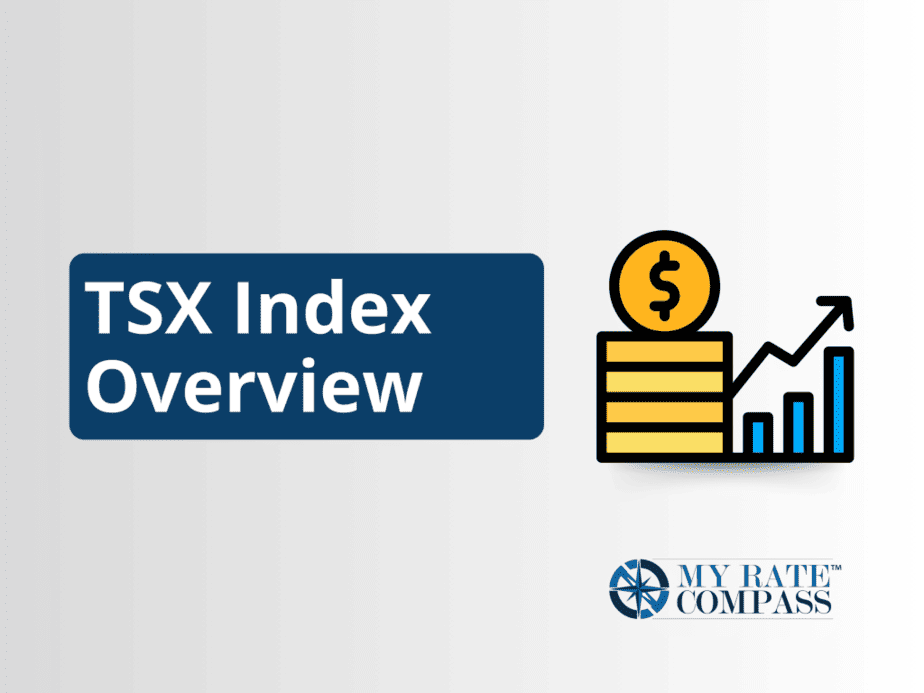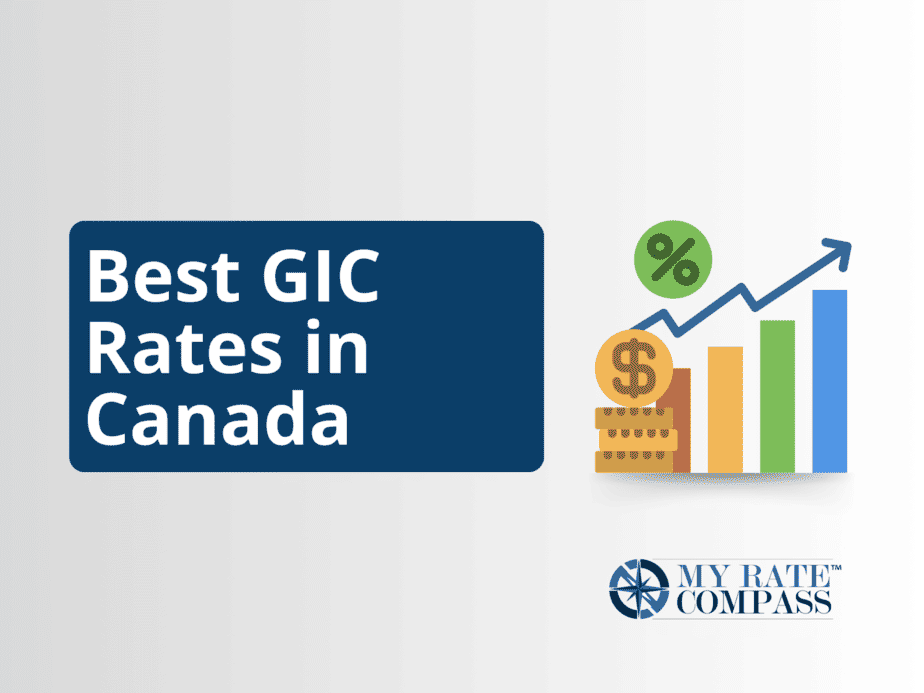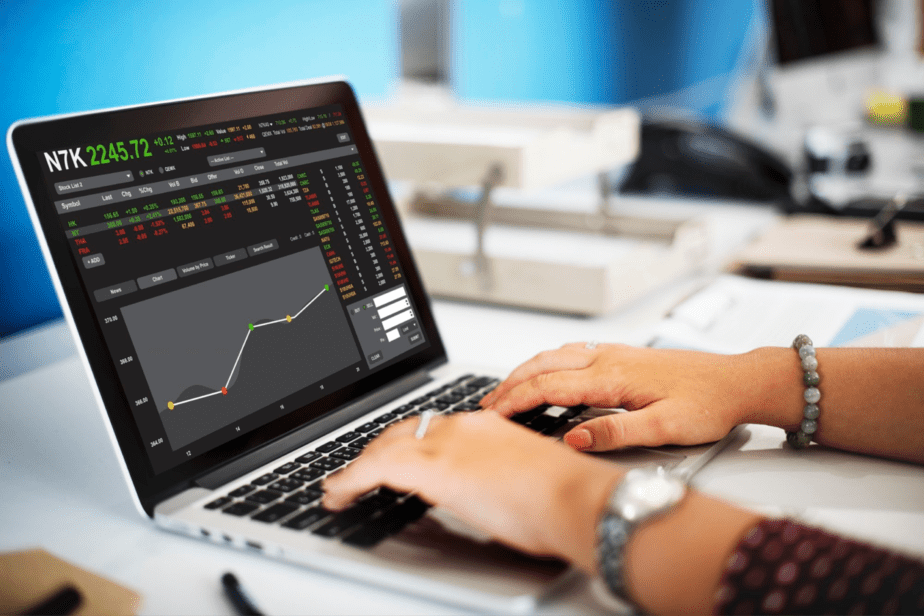TSX Index
Here at myratecompass.ca, we’re committed to providing our readers with information on a diverse array of financial topics. Recently, we’ve reviewed major players in the retail banking sector, how they’re structured, and the services they provide. We then transitioned into covering some of Canada’s most popular and most valuable credit card rewards programs. Today, we’re making another transition.
In the past, we’ve briefly looked into the various investment services offered by some of Canada’s largest banks. We’ve explained how those banks’ investment services help their clients grow their wealth by investing in stocks, bonds, GICs, and other financial products. While it’s technically possible to invest only in very safe products such as government bonds and GICs, doing so would not carry much potential for a large return given how low-risk those investments are. The potential for the greatest return, rather, lies in the stock market.
Today we’re going to take a look at the TSX Index, which both Canadian and global investors use to evaluate the state of the Canadian economy when deciding which companies to invest in. We’ll get into more detail in a bit, but as a general matter, the TSX Index uses the stock price of some of Canada’s largest companies as a proxy for the performance and overall financial health of both those companies and the Canadian economy as a whole.
Background
Buying stock is one of those nebulous concepts that seems quite easy to grasp from a theoretical standpoint. After all, stock is, at its core, simply an ownership interest in a company. When a person buys stock in, say, Apple, Google, or any other publicly traded company, that person technically becomes a partial owner of the company, albeit a very small one.
But where does one actually go to buy stock? We’re all familiar with the concept of the “stock market,” but again this phrase typically refers to a concept, rather than an actual place. While the reality is a bit more nuanced, for the sake of general understanding, it’s enough to say that the stocks of publicly traded companies are listed on structures called stock exchanges. Individual and institutional investors then use a variety of platforms to access those exchanges and purchase stock for themselves, their firms, or their clients.
The Toronto Stock Exchange
“TSX” stands for Toronto Stock Exchange. The Toronto Stock Exchange is one of six stock exchanges in Canada. Others include the Canadian Securities Exchange, the Montreal Exchange, and the TSX Venture Exchange, which lists startup companies that are not yet big enough to be listed on the TSX but still wish to access Canada’s public capital markets.
What’s the purpose of a stock exchange?
Before we go any further, we should take a step back and explain exactly what the purpose of a stock exchange is in the first place.
As it turns out, the answer to this question is quite simple. Companies, of course, need money to operate. They need cash to purchase equipment, supplies, and workspace, to pay employees, and to invest in research and development. What is more, companies must shoulder these expenses to make money in the first place. Thus, the old phrase, “You’ve got to spend money to make money” is very true.
Any business, therefore, requires investors in order to start, grow, and ultimately succeed. Private companies, especially small businesses, typically receive their funding from a local bank or a small group of individual investors. Nearly all companies start this way. But once a company gets large enough, it requires more capital than private investors are willing or able to provide. This is when a company will seek to “go public.”
When a company “goes public,” the company is essentially opening itself up to receiving investments from (and thus selling ownership shares in the company to) anyone who wishes to invest in it. The company, therefore, offers its stock for sale to the public, and invests the proceeds of the stock sale back into the company, using that money to further expand its operations.
So, to get back to our first question: the purpose of a stock exchange is to provide a platform for companies to list their stock for sale to members of the public.
How does a company get listed on the TSX?
The TSX is the biggest of the six Canadian stock exchanges. Typically, about 250 companies are listed on the TSX at any given time. This differs from some other exchanges, such as the S&P 500 in the United States, which is always comprised of 500 companies. But importantly the TSX is not always comprised of the same (approximately) 250 companies. Rather, a company must meet certain market capitalization and liquidity requirements to qualify for listing on the TSX.
Market capitalization refers to the amount of a given industry that a single company’s volume of business represents. An illustration is helpful to understand this concept.
Let’s say Company A does $100,000,000 worth of business annually in Industry A. Let’s also assume Industry A overall is a $1 billion industry. Company A’s market capitalization would be 10% (1,000,000,000 / 100,000,000), meaning that Company A makes up 10% of the total business done in Industry A.
In order to qualify for listing on the TSX, a company’s market capitalization must be at least .05% (one-half of one percent). Thus, in our example, Company A would easily satisfy the market capitalization requirement.
Next, a company must satisfy certain liquidity requirements, which take into account how easily the company’s securities can be bought and sold on the open market.
Next, a company’s trading volume must represent at least .025% of the total daily activity on the exchange. This means at least one-quarter of one percent of all trades made on the exchange in a day must involve that company’s stock. So, if there are 1,000,000 trades per day on an exchange, at least 250 of those must involve Company A’s stock for Company A to satisfy the trading volume requirement.
Finally, the company’s stock price cannot fall below $1 for more than a certain amount of time.
Importantly, the TSX is open to companies in all industries and across all sectors of the economy. Indeed, the TSX features companies from a variety of industries, including financial services, real estate, and health care. But companies involved in the energy and natural resources sector are disproportionately represented on the TSX, comprising about 1/3 of all the companies listed on the TSX. This is largely a function of the nature of the Canadian economy, Canada’s wealth of natural resources, and the industries that accordingly thrive in Canada.
What does the TSX Index measure?
With all this background, we can finally address the question that we set out to address in the first place: what does the TSX Index measure?
The answer to this question, too, is relatively simple. The TSX Index tracks the performance of all the companies currently listed on the exchange. The TSX Index follows the stock prices of each listed company and uses those prices as a proxy for the performance of those companies.
Additionally, because Canada’s largest companies are listed on the TSX, many investors look to the TSX Index as an indicator of the state of the Canadian economy overall. If the TSX Index is up, that generally means the economy as a whole is performing well. It typically correlates to lower unemployment, higher returns on investments, and general economic wellbeing. By that same token, if the TSX is down, it generally indicates economic slowdown.
Accuracy of the TSX Index
As a general matter, the TSX Index is a decent indicator of the health of Canada’s economy. It is important to point out, however, that the TSX Index, like any tool of estimation, isn’t perfect.
The TSX Index is a capitalization-weighted index. This means that larger companies (those with more market capitalization) influence the index more than smaller companies. In other words, a 10% drop in the stock price of a large company would negatively impact the index more than a 10% in the stock price of a smaller company would.
Conclusion
Given the Toronto Stock Exchange is the largest stock exchange in Canada, listing the stock of many of Canada’s largest and most successful companies, the TSX Index is an excellent bellwether for the Canadian economy at large. The TSX Index gives investors a useful snapshot of Canada’s current business environment, and it’s an invaluable tool that investors use when deciding where to place their bets on the market.




